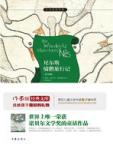Chapter 1 sequence
The Swedish literal translation of this Chinese version is called "Nils Hogelson's Wonderful Travels Around Sweden". The author is the Swedish female writer Selma Lagerlof (1858-1940). After visiting all over the country in Sweden, he wrote this famous novel full of quirks.The book is divided into two volumes, published in 1906 and 1907.Between the book's first publication and Lagerlof's death in 1940, it sold 3.5 million copies.Since then, it has been reprinted every few years and is the most widely circulated work in Swedish literature.This book has been translated into more than 50 languages so far. It is the first and only fairy tale work in the history of world literature to win the Nobel Prize for Literature.This work, in the recent generations of Sweden, from the king, the prime minister, to the common people, almost everyone has read this book since they were young, and grew up under the subtle influence of this story.
It is about a fourteen-year-old rural boy named Nils.His family lives in the south of Sweden, and his parents are kind, hardworking but very poor farmers.Niels doesn't like reading and studying, he is mischievous and likes to play tricks on small animals.One early spring, his parents went to church, and because he played tricks on an elf at home, he was turned into a little man as big as a thumb by the elf.At this moment, a group of wild geese flew across the sky, and a goose at home wanted to spread its wings to follow the goose. In order to prevent the goose from flying away, Nils hugged the goose's neck tightly, but was taken high into the sky by the goose.From then on, he rode on the back of a goose and followed the geese across the country, traveling around Sweden, flying from the south to the northernmost Lapland province, and it took eight months before he returned home.Riding on the back of a goose, he saw the strange peaks, different rivers and beautiful scenery of his motherland, learned the geography and history of the motherland, heard many stories and legends, and experienced a lot of risks and hardships.During the roaming, he learned a lot of advantages from his traveling companions and other animals, gradually corrected his mischievous shortcomings, and cultivated the excellent character of helping others.When he returned to his hometown, he not only became a tall and beautiful boy again, but also became a gentle, kind, helpful and hardworking boy.Through this story, the author inspires children to have good moral character and a strong thirst for knowledge, and to be good at learning from others' strengths to complement their own weaknesses.This story can make the hearts of teenagers and children become purer and kinder.At the same time, young readers can also enjoy the beautiful rivers and mountains of Sweden from Nils' roaming, learn about Sweden's geography, history and cultural traditions, and learn about various animals and plants that grow on this land.This work made Lagerlof enjoy high prestige in Sweden, and her face is included in the banknotes published in Sweden-her face is on the front, and her representative book shadow is on the back.Not only that, but this work has become a world famous book, which has won her the same reputation as the Danish fairy tale writer Andersen, and made her a Swedish writer with world reputation.She became the first female writer to win the Nobel Prize for Literature in 1909 for this book, and the first female academician of the Swedish Academy in 1914.Countries such as Norway, Finland, Belgium and France also awarded her their highest medals.
Lagerlof's creations interweave fantasy with reality, fantasize reality without completely leaving reality, and romanticize nature without completely breaking away from nature, which is particularly prominent in her novels.In this work, her ingenious conception and superb writing skills make everything in the world have thoughts and feelings.In her book, she uses a lot of anthropomorphic writing methods, moving what happened in the human world to the world of animals and plants, which makes the whole work dynamic and has a plot, where people and anthropomorphic animals and plants actively act and organically Combined together, it is full of fun, making the work extremely vivid and romantic.In addition, she also uses vivid and vivid metaphors in the book, interspersed with a large number of fairy tales, legends and folk tales, some of which are to narrate historical facts to readers, some to tell about topography and landforms, and some to introduce the life and growth laws of animals and plants, Some are to praise the good virtues of helping the weak, to praise the victory of goodness over evil, and the victory of pure love over selfishness, cruelty and cruelty.Another important feature of this work is the combination of the pre-echoing plot and the independent story.The whole book is based on the story of Nils changing from a human to a little man with the size of a thumb, and then from a small man to a man again. Many independent stories, fairy tales and legends are interspersed, making each chapter self-contained and unique. coherent.Lagerlof is very good at creating in this way.
In order to enable children to understand, remember, and truly grasp the knowledge, she basically uses plain and straightforward narration and simple strokes to write, and the words are also very simple. Heavy strokes and colorful, long-winded descriptions.

